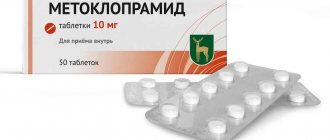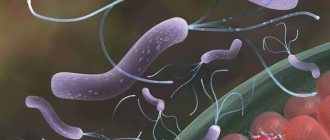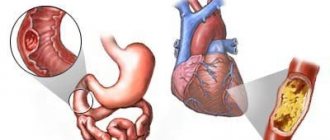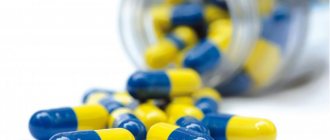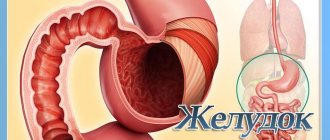What can trigger the development of pathology?
If a patient was diagnosed with acute gastritis, then, as a rule, its development was facilitated by strong irritants that caused foci of inflammation on the walls of the stomach. In the case when the disease occurs in a chronic form, then during diagnosis, specialists can identify progressive atrophy and structural changes in the mucosa.
Factors that provoke the development of this pathology include the following::
- penetration of pathogenic microflora into the body;
- bad habits;
- eating poor quality food;
- eating disorder;
- stress;
- taking medications;
- chemical and food poisoning, etc.
Main groups
Medicines used to treat stomach ulcers belong to different groups, depending on the course of the disease and associated complications, certain regimens are prescribed. Let's briefly look at the classifications separately with a few examples (there are actually many more drugs), and then we'll move on to specific drug use regimens.
Proton pump inhibitors (PPIs)
Primary means for the treatment of acid-related diseases. Reduces the production of hydrochloric acid, this increases the pH of the environment and creates favorable conditions for the restoration of the mucous membrane in case of a stomach ulcer. They block the so-called proton pump of parietal cells.
All drugs have a similar chemical structure, but differ in the structure of the arrangement of radicals. As a result, the mechanism of action is also identical. They differ in the frequency of side effects, duration and strength, and bioavailability. The standard dose of any PPI is one capsule/tablet per day; in case of severe disease, the dose may be increased.
An important feature of these drugs, especially the more modern ones, is their comparative safety. Allowed for long-term use.
There is debate about the generational division of PPIs; there are several classifications, but the difference for non-medical workers is insignificant:
- Generation: Omeprazole (Omez, Losek, Ortanol), Lansoprazole (Lancid). Quite old, but still effective tablets.
- Pantoprazole (Nolpaza, Sanpraz), Rabeprazole (Pariet, Zulbex, Razo).
- Esomeprazole (Nexium, Emanera), Dexlansoprazole (Dexilant). The most modern in terms of efficiency, they are distinguished by a high price.
Nexium was recently included in the list of vital and essential drugs in Russia, due to which its cost has dropped by an order of magnitude (without exaggeration). If you can find it in pharmacies, it is the best choice at the moment.
Antacids are suitable for treating ulcers and gastritis. Designed to temporarily but quickly reduce acid levels. Due to their chemical properties, they interact with hydrochloric acid and a neutralization reaction takes place. They are also able to envelop the walls of the stomach, protecting it from harmful factors. Partially adsorb and remove toxins.
They are used half an hour before meals, so that the drug has time to distribute normally throughout the walls of the stomach. Doctors recommend using antacids in the form of suspensions; they are believed to have a faster effect.
Divided into absorbable:
- Rennie
- Other products containing soda (sodium bicarbonate)
And more modern non-absorbable antacids (read more in the next article):
The use of antacids alone usually does not lead to complete recovery, since the mechanism of ulcer formation is complex and an integrated approach is required.
Antibacterial drugs (antibiotics)
Used to eradicate harmful Helicobacter pylori. Do not use if bacterial infection is not confirmed by tests or for other gastric diseases. For the reasons described above, they are available by prescription; self-medication will lead to the resistance of the following strains and their destruction more and more difficult.
Antibiotics destroy the beneficial intestinal microflora; after the course it is necessary to recover with the help of probiotics.
Conventionally, they are divided into first and second choice antibiotics. Initially, treatment of ulcers with Helicobacter contamination is carried out first:
- Clarithromycin (Klacid, Fromilid) is a mandatory drug; not a single doctor’s prescription for eradication can do without it. Refers to semi-synthetic macrolides.
- Amoxicillip (Flemoxin).
If the therapy does not produce results, proceed to the second, more “severe” group for both the bacteria and the patient:
- Tetracycline. It has many side effects, which make no sense to list, because tetracycline is used when it is absolutely necessary.
- Levofloxacin - at the last disease control meeting in 2017, was included in the list of recommended antibiotics for high resistance to clarithromycin.
- Metranidazole.
- Azithromycin.
When treating with antibiotics, it is strongly recommended to buy high-quality medicines. If you have to resort to a second course, the result and side effects will be much worse.
Gastroprotectors
Reduce the aggression of gastric juices by restoring the barrier properties of the mucous membrane. They create their own protective layer, which has a cytoprotective (cell-protecting) effect. Relieves inflammatory processes.
In treatment regimens, the best gastroprotector is De-nol or Novobismol (bismuth tripotassium dicitrate). Quickly dissolves in an acidic environment, creating a durable colloidal film. Provides protection for 6–8 hours. In addition, it inhibits H. pylori, complicates its adherence to the walls of the stomach, and prevents it from taking root in the human body. Use two tablets twice, 30 minutes before meals.
The bactericidal effect of De-nol is significantly inferior to antibiotics, but Helicobacter can never develop resistance to bismuth, so in combination they give an improved result.
There are cheaper analogues, but they do not appear in the recommended schemes:
H2 histamine receptor blockers
Like PPIs, they weaken the secretion of acid into the lumen of the stomach, but have a different mechanism of action and block other receptors on parietal cells. Historically, proton pump inhibitors appeared a little earlier and were the “gold standard” until 1988. They have a greater number of harmful effects and are inferior to even Omeprazole.
Classification of histamine H2 blockers by novelty:
- Cimetidine was synthesized first in 1976 by James Black and received the Nobel Prize in Medicine for scientific achievements. Not currently applicable.
- Ranitidine, a formerly popular anti-ulcer drug, is now sold but not prescribed by doctors.
- Famotidine is the only H2 blocker tablet that is occasionally used to treat ulcers. Indicated when the patient has high resistance to more effective drugs.
- Nizatidine - in theory, belongs to the latest generation of gastimine H2 blockers, but in practice it is not much different from famotidine, and is practically not found in Russia.
The main reason why prescribing this group is still sometimes relevant is the individual characteristics of some people who do not benefit from PPIs.
Anticholinergics
They are also called cholinergic receptor blockers. There is no particular point in dwelling on them in detail, since it is used exclusively under the supervision of specialists. Choline receptors are located throughout the body, including in the stomach, where they have a predominantly antisecretory effect. They have a large number of serious side effects.
- Atropine
- Gastrocepin
- Belladonna extract
There are many more auxiliary medications belonging to other groups.
- Antispasmodics – may be prescribed to relieve pain. In fact, they do not treat, they only relieve spasm of smooth muscles. No-shpa, Drotaverine, Buscopan.
- Antiemetics – Cerucal, Metoclopramide.
- Stimulators of tissue regeneration Actovegin and Solcoseryl. The inclusion of these drugs in the course reduces the risk of relapse within a year several times.
- Helinorm Pylopass is a drug that is one of the new developments of drugs for stomach ulcers. The special properties of lactobacilli in the composition make it possible to bind pathogenic H. pylori and naturally remove them from the body. This significantly reduces their number, and, accordingly, the time for recovery.
Ganglioblockers are outdated drugs used until the middle of the last century. They block the transmission of nerve impulses in tissues, which weakens the secretion of all glands, leading to a decrease in vascular tone and a drop in blood pressure.
Manifestations of gastritis
The pathological process is accompanied by characteristic symptoms:
- nausea;
- feeling of a full stomach;
- gag reflex;
- pain syndrome;
- belching;
- bad breath;
- heartburn;
- flatulence;
- the appearance of a gray or yellow coating on the tongue;
- weakness;
- feverish condition.
How are patients examined?
Before choosing a drug therapy regimen, gastroenterologists conduct a comprehensive examination of patients according to a special protocol (international). Diagnostics includes laboratory and hardware tests :
- Blood, stool and urine tests.
- Histological and cytological examination of biological material.
- Ultrasound of the gastrointestinal tract.
- Esophagogastroduodenoscopy.
- Additional hardware diagnostics are prescribed if there is a suspicion of ulcerative pathology or malignant processes.
What does the success of treatment depend on?
The effectiveness of drug therapy aimed at combating this pathology directly depends on the chosen regimen, which must meet the following requirements:
- Use of antibiotics that are resistant to acidic environments.
- Competent selection of drugs that can destroy pathogenic microflora.
- The use of local drugs (only on the gastric mucosa).
- Prescribing medications that are quickly eliminated from the body.
The duration of the course of drug therapy directly depends on the form of the pathology and the severity of its course. If there are no pronounced symptoms indicating the presence of problems (caused by Helicobacter) in nearby gastrointestinal organs, then treatment takes up to 4 weeks.
Observation by a gastroenterologist after therapy
After undergoing drug therapy, patients will be required to be registered with a dispensary for 3 years. After this period, laboratory and instrumental tests are carried out, based on the results of which the gastroenterologist determines whether the patient can be removed from the register.
When the patient is in remission, he must follow the following recommendations of the gastroenterologist:
- Stick to a bland diet.
- Take healing decoctions prepared from pharmaceutical chamomile, celandine, yarrow, St. John's wort (in autumn and spring, the course of herbal medicine should be 3 weeks).
- Undergo physiotherapeutic procedures: mud therapy, hydrotherapy, electrophoresis, currents (dynamic).
- Drink mineral waters (course 3 weeks, repeated after 3 months).
- Take vitamin complexes.
- Undergo sanatorium treatment (3 months after relapse).
What treatment regimen for gastritis of the stomach can be used for adults?
When treating pathologies such as gastritis, specialists can use the following schemes::
- Drug therapy is designed for 2 weeks. Every day the patient should take drugs such as Clarithromycin (500 mg), Amoxicillin (1000 mg), Omeprozole (1000 mg) morning and evening.
- The therapy involves taking 4 medications and is designed for 2 weeks (medicines are taken 2 times a day). To Clarithromycin (500 mg), Amoxicillin (1000 mg), Omeprozole (1000 mg), a bismuth preparation (tricotassium dicitrate) is added in a daily dosage of 240 mg.
- A bismuth drug (tricotassium dicitrate) is prescribed in a daily dosage of 240 mg, and Nifuratel tablets (400 mg), Amoxicillin (1000 mg). The course of therapy is 2 weeks, taking medications 2 times a day.
- A drug therapy regimen intended for the elderly. Amoxicillin tablets (1000 mg), Omeprozole (1000 mg), bismuth-based drug (tricotassium dicitrate 240 mg). The course is 2 weeks, taking medications 2 times a day.
- If the patient has an allergic reaction to antibiotics, then Omeprozole (1000 mg) is left in the regimen, to which a propolis solution (aqueous) is added.
Average prices
Antibiotics cost an average of about 300 rubles per package.
The cost of histamine receptor blockers is slightly higher - up to 800 rubles.
Proton seal inhibitors cost no more than 400 rubles.
Gastroprotectors and similar analogues are quite expensive - from 1,500 rubles.
The cost of anticholinergic drugs is from 400 to 500 rubles.
Antacids are quite cheap - up to 100 rubles.
The average price of antiemetic drugs is about 300 rubles.
Popular antispasmodics are very cheap - only 50 rubles.
Ganglioblockers, due to the specifics of their use, are very expensive - about 1,700 rubles.
What treatment regimen for gastritis can be used for children?
When treating young patients for gastritis, gastroenterologists are faced with the following tasks::
- Normalize the functionality of the mucous membrane.
- Reduce the aggressive effects of acid.
- Restore all processes in the gastrointestinal tract.
Drug therapy prescribed to children involves taking such drugs:
- Ranitidine;
- Omeprazole;
- Metronidazole;
- Furazolidone;
- Nifuratela;
- Azithromycin;
- Roxithromycin;
- Clarithromycin;
- Amoxicillin;
- Bismuth preparations.
Regardless of which regimen was chosen for treatment, all categories of patients must follow a dietary diet, otherwise it will not be possible to transfer the disease into a state of stable remission:
- All foods that can cause active production of gastric juice are excluded from the daily menu.
- Smoked meats, pickles, fried, spicy and fatty foods are prohibited.
- Food should have the consistency of puree. If you don’t have kitchen appliances at home, you can grind food using a grater.
- Products must undergo heat treatment. They can be boiled, baked, stewed or steamed.
- The patient's diet must contain protein, but only lean meats and fish are allowed (turkey and rabbit are ideal).
- During the diet, patients should drink herbal infusions, self-prepared compotes and jelly, as well as still mineral water.
Why may the chosen drug therapy regimen be ineffective?
Sometimes there are situations in which a patient who has undergone treatment does not feel any improvement. Based on the results of laboratory and instrumental studies, experts conclude that the chosen drug therapy regimen did not bring the expected results.
The reasons for treatment failure include the following factors::
- The patient was prescribed medications to the components of which he was intolerant.
- Resistance (primary) of the pathogenic bacterium Helicobacter is expressed.
- Antibiotics were not included in the regimen, the dosage was prescribed incorrectly, the patient violated the deadline for taking them, and the drug was selected incorrectly.
- There is circulation of Helicobacter within the patient's family, which led to re-infection.
- The gastroenterologist chose an ineffective drug therapy regimen.
Gastritis and gastric ulcers are the most common gastrointestinal ailments that occur due to the pathological effects of the bacterium Helicobacter pylori. It follows that drug therapy will have several common features. This is explained not only by the common causes of occurrence, but also by the almost identical symptoms of such ailments. The only difference will be the use of drugs to normalize the acidity level, in cases with low or high levels of hydrochloric acid.
Gastroprotectors
Gastro- and enteroprotectors are drugs to protect the mucous membrane of the gastrointestinal tract. Used for:
- chronic gastritis;
- peptic ulcer of the stomach and duodenum;
- non-ulcer dyspepsia of the gastrointestinal tract;
- erosive gastritis;
- taking non-steroidal anti-inflammatory drugs (NSAIDs).
Prostaglandin drugs often cause diarrhea (diarrhea).
Sucralfate, an aluminum salt of sulfated sucrose, which polymerizes in an acidic environment and forms a sticky substance covering the ulcer surface, should not be taken together with antacids and drugs that reduce the secretion of hydrochloric acid (there will be no polymerization and the drug will not work).
Important information for the patient: Among gastroprotectors, three groups can be distinguished: 1) agents that mechanically protect the mucous membrane (bismuth subcitrate), 2) agents that increase the resistance of the mucous membrane to damaging factors (prostaglandin E2 preparations, aluminum-containing antacids and omeprazole).
Drugs for treatment
Currently, gastroenterology has developed several treatment regimens for such disorders, which are aimed at eliminating the main pathogen.
Gastritis therapy according to a three-component scheme involves taking:
The duration of such treatment is usually no more than ten days. If no changes have occurred during this time, then the reason may be the resistance of the pathological microorganism to drugs. In such cases, a second course of therapy is indicated, after about two months, using four components:
- antibiotic;
- bismuth;
- PPI;
- nitrofuran derivatives.
There is also the most effective treatment regimen for peptic ulcer disease, which consists of two stages:
- the first – the use of two antibiotics and a PPI is indicated for seven days. The main goal of this stage is the complete destruction of the Helicobacter pylori bacterium;
- the second one lasts two weeks. In addition to the above substances, it is recommended to take one of the bismuth preparations or histamine receptor blockers.
It follows from this that almost the same groups of drugs are used to treat gastritis and stomach ulcers.
Each case of disease is considered by a specialist individually for each patient. At the same time, data from laboratory and instrumental examinations, sensitivity to pathogenic microorganisms, as well as a person’s intolerance to a particular medication are taken into account.
Histamine-H2 receptor antagonists
Histamine H2 receptor antagonists can be used to treat ulcers or gastritis. This group of drugs includes drugs such as Ranitidine, Cimetidine, Lafutidine, Nizatidine, Famotidine, Roxatidine, Niperotidine, Ranitidine bismuth citrate, Mifentidine.
You can also consider Tavegil, Suprastin, Loratadine, Telfast, Erius.
For the treatment of peptic ulcers, gastritis, and duodenitis, medications from the group of proton pump inhibitors are often prescribed.
These include drugs such as Acrylanz, Lanzap, Epicurus, Lancid, Gastrozol, Zerotsid, Losek, Omezol, Chrismel, Zolser, Omez, Otsid, Romesek, Ulzol, Helol, Pantaz, Controloc, Panum, Nolpaza, Rabiet, Ultera, Nexium , Emezol, Neo-zext and others.
Treatment of gastritis and stomach ulcers: 3 ways
Often, gastroprotective medications may be prescribed to treat gastritis or stomach ulcers. These include Sucralfate (a drug that has a protective, adsorbent, antiulcer, antacid, enveloping effect), Solcoseryl (a drug whose action is aimed at improving cellular metabolism).
Medicines such as Enprostil, Misoprostol, Actovegin, Biogastron, Amigluracil, Methyluracil, Romazulan, Histidine hydrochloride may also be prescribed.
Antacids include medications such as Rennie, Gastal, Gaviscon, Almagel, Maalox, Phosphalugel.
Cholinergic drugs include drugs such as Gastrocepin, Buscopan, Metacin (a milder drug), Platyfillin, Ethanol.
Antiemetic medications that are used for ulcers or gastritis include:
- Motilium. This drug is aimed at relieving nausea. The medicine does not affect the secretion of gastric juice.
- Cerucal. This drug stops the transmission of nerve impulses from dopamine receptors to the vomiting center in the human brain. It also stimulates intestinal motility.
- Metoclopramide. There is an opinion that the medicine not only suppresses the attack of vomiting, but also promotes the healing of the ulcer.
Antispasmodics are drugs that reduce spasm of smooth muscles. They are used for abdominal pain that accompanies these diseases.
Papaverine, Duspatalin, Trimedat, Dicetel, No-Shpa, Niaspam, Nifedipine, Spasmomen, Iberogast, Meteospasmil are often used.
All gastroenterology clinics and medical centers in your city. Tests and ultrasound. Consultation with a gastroenterologist. Diseases of the digestive system. Find out more: - In Kiev (Hertz, Ilaya, Euromed) - In St. Petersburg (SM-Clinic, Longevity, Allergomed, Doctor, BaltZdrav, Professor) - In Moscow (SM-Clinic, Medlux, Onmed) - In Kharkov (CMEI , Olympic, Victoria, Fortis, Ecomed) - In Minsk (Belgirudo, Art-Med-Company, Sinlab, Mikosha, GrandMedica, MedClinic) - in Odessa (Medea, On clinic, Into Sano, Venus) - In Razyan (Trust, Polyclinic -Pesochnya, Evrikas) - in Nizhny Novgorod (Only Clinic, Alpha Center, EuroClinic, SOLO, Althea) - gastroenterological clinics of Tyumen (Doctor A, Clinic “Vera”, Avicenna, Medis, Sibirina, Your Doctor)
General treatment tactics
Common medications for gastritis and stomach ulcers are:
- antibiotics;
- proton pump inhibitors;
- bismuth preparations;
- antispasmodics and painkillers.
The main purpose of using antibiotics is to completely eliminate or reduce the number of pathogenic bacteria. The group of antibiotics includes:
- Amoxicillin - its beneficial effect is due to the fact that such a substance is resistant to the acidic contents of gastric juice. It differs from other drugs in this group in that it is almost completely absorbed and distributed throughout the tissues of the affected organ;
- Clarithromycin - used as the main antibiotic to treat such disorders;
- Metronidazole is a broad-spectrum medicine. This is due to the fact that it has an antimicrobial effect and destroys the DNA of microorganisms;
- Tetracycline.
PPIs are a group of drugs aimed at blocking the secretion of acidic stomach contents. Such medications got their name because they act as a kind of pump in those cells that produce hydrochloric acid. To treat these two stomach diseases, the following are often used:
- Lansoprazole - reduces the acidity of the contents at the final stage, i.e. before release into the cavity of the affected organ;
- Omeprazole - acts regardless of what caused the increase in acidity - food or exposure to enzymes;
- Rabeprazole not only normalizes the level of hydrochloric acid, but also has a detrimental effect on the bacterium Helicobacter pylori.
Medicines containing bismuth, which are used to treat such disorders, not only inhibit the development of the pathogenic microorganism, but also form a protective film around the affected organ. In addition, they increase blood supply to the mucous membrane and the secretion of protective mucus. The most effective drugs for the treatment of gastritis and stomach ulcers:
- De-Nol;
- Novobismol;
- Ulcavis;
- Ventrisol.
The most effective antispasmodics during the inflammatory process and gastric ulcers are:
- Halidor - aimed at reducing vascular spasms and blood pressure, in some cases it can cause rapid heartbeat. If a person has such diseases, it is used as a pain reliever. If taken in large quantities, it will act as a tranquilizer;
- Dibazol and Papaverine - are able to reduce the manifestation of pain, but differ in that they act for a short time;
- No-spa is one of the most popular and most effective antispasmodics. It has a wide spectrum of action, and its medicinal effect lasts for a long time.
In addition, the comprehensive treatment of such pathologies includes:
- anticholinergics;
- antacids;
- antiemetics;
- ganglion blockers;
- reparants and gastroprotectors. Such substances take part in restoring the integrity of the mucosa and regeneration of affected tissues. The most effective drugs from this group are Solcoseryl, Actovegin, Amigluracil and Sucralfate.
Anticholinergics are aimed at blocking the influence of the parasympathetic nervous system on the functioning of internal organs. The treatment regimen for such diseases may include one of the following substances:
- Gastrocepin - has an effect only on the membrane of the affected organ, which causes a decrease in the secretion of hydrochloric acid;
- Buscopan - improves the general condition of patients with this diagnosis by reducing the intensity of pain and reducing acidity;
- Etpenal - used for symptomatic treatment of peptic ulcer;
- Metacin and Platiphylline .
Antacid substances are aimed at protecting the mucous membrane from the influence of various irritants. Gastroenterologists in most cases prescribe:
- Almagel – has an enveloping and adsorbing effect. It does not cure the disease, but helps eliminate symptoms;
- Maalox - normalizes not only the acidity of gastric juice, but also the water-alkaline balance;
- Gastal - unlike other antacids, acts for a long time, normalizes pH, and also eliminates heartburn and pain;
- Phosphalugel - can not only reduce the secretion of hydrochloric acid, but also reduce the formation of pepsin. Envelops the membrane, but has no effect on Helicobacter pylori.
The only difference in the treatment of such diseases is that in cases of gastritis, substances may be needed to increase the acidity of gastric juice.
Due to the fact that there is a wide variety of medications and their equally effective analogues, only the attending physician can decide which particular set of medications patients should take. Taking medications on your own, without a doctor’s prescription, can not only aggravate the course of the disease, but also cause complications.
Active ingredient: Levofloxacin
Broad-spectrum antibiotic. In anti-Helicobacter therapy regimens, it is usually used as a “reserve drug” in cases where a person cannot tolerate other antibiotics or previous treatment for Helicobacter pylori infection has proven ineffective. When taken, nausea, vomiting, diarrhea, decreased appetite, abdominal pain, decreased blood pressure, dizziness, weakness, drowsiness and other side effects are possible.
- Treatment of gastritis with honey: reviews and recipes
- Diet for stomach ulcers: what to eat
- Propolis for stomach ulcers recipes
- Somatoform dysfunction of the autonomic nervous system treatment
1-, 2-, 3- and 4-component treatment regimens for peptic ulcer disease
Modern medical methods of treating gastric and duodenal ulcers have four different schemes in their arsenal.
1-, 2-, 3-, 4-component treatment regimens for peptic ulcer
Monotherapy and each of the subsequent therapeutic protocols that provide effective treatment of peptic ulcer disease, 2, 3, 4 component regimens, are used today for the eradication of Helicobacter pylori. The goal of treatment is to relieve symptoms. and provide conditions for rapid scarring.
1-component treatment regimen for peptic ulcer
A 1-component treatment regimen involves the use of:
- de nola,
- macrolides,
- semisynthetic penicillin,
- metronidazole.
It is effective in only 30% of episodes of gastric and duodenal ulcers, so experts prefer monotherapy to complex drug treatment methods.
2-component treatment regimen for peptic ulcer
The 2-component treatment regimen for gastric and duodenal ulcers has several variations: for example, a specialist prescribes a combination:
- de-nol and metronidazole;
- de-nol and amoxicillin.
It gives results only half the time. Often failure is due to the resistance of the pathological flora to metronidazole. According to medical studies, between 1991 and 1995 alone, the effectiveness of metronidazole fell by more than half.
3-component treatment regimen for peptic ulcer
The “classic” 3-component treatment regimen for gastric and duodenal ulcers also has several options:
- de-nol, metronidazole, tetracycline;
- de-nol, metronidazole, amoxicillin.
In what cases is antibacterial therapy required?
Antibiotics are medications designed to fight bacteria that cause the development of
. If during the examination a large degree of microorganisms was identified in the patient
, upon examination, the doctor sees atrophy or foci of erosion, and the patient himself complains of symptoms such as abnormal stool,
, then such a person must be prescribed antibacterial therapy.
Taking antibiotics must necessarily be combined with taking medications that restore damaged gastric mucosa and accelerate the renewal of damaged areas.
The combination of Clarithromycin (penicillin group) and Amoxicillin (macrolide) enhances the effect of these two drugs. This treatment regimen is considered one of the most effective. Its effectiveness has been verified by numerous studies. By the way, the same treatment regimen is used to treat stomach ulcers abroad.
After the examination, the doctor may prescribe Metronidazole in combination with Tetracycline. They should be taken according to the following regimen: Metronidazole 500 mg twice a day Lansoprazole (30 mg) twice a day, Tetracycline (500 mg) four times a day and colloidal bismuth subcitrate (dosage is 240 mg) twice a day.
The total duration of treatment ranges from seven to ten days.
Omeprazole is a potent drug that partially or completely inhibits the production of enzymes necessary for the production of acid in the stomach. It has a long-lasting effect and is more effective than H2 blockers. For reduction, Gastal, Rennie, Almagel, Gaviscon, Phosphalugel, Rutacid, De-Nol, Vikalin can be prescribed.
Despite similar symptoms, treatment with antisecretory or antacid medications for low acidity is completely unacceptable.
Drug treatment of gastric and duodenal ulcers
The disease occurs as a result of a violation of gastric secretion and a failure in the protective mechanism. That is, it is provoked by a combination of factors:
- excessive secretion of enzymes, pancreatic juice and hydrochloric acid;
- insufficient formation of mucus on the walls of the organ, which should protect the mucous membrane from “self-digestion”;
- poor blood supply to the walls of the stomach, resulting in slow renewal or regeneration of damaged gastric mucosa;
- impaired motility of the digestive tract - food in the stomach very quickly enters the duodenum, which puts a strong burden on the digestion processes in the initial part of the small intestine;
- reflux of bile and pancreatic juice from the intestines into the stomach.
Causes of disorders leading to the development of the disease
- hereditary predisposition - in such patients an increased number of cells responsible for the synthesis of hydrochloric acid was found; this leads to its production in large quantities when exposed to provoking factors;
- the microorganism Helicobacter pylori, which infects goblet cells responsible for mucus secretion and causes inflammation;
- long-term use of non-steroidal anti-inflammatory drugs and glucocorticoids (both simultaneously and separately), which leads to a decrease in mucus production; as a result, the walls of the organ become vulnerable to the effects of enzymes, hydrochloric acid and pancreatic juice;
- smoking and alcohol - nicotine stimulates the formation of hydrochloric acid and impairs blood circulation, and alcohol destroys the gastric mucosa;
- frequent stress – this increases motor skills and increases the production of hydrochloric acid;
- Among the rare causes are diseases in which the development of an ulcerative process in the gastrointestinal tract is possible: hyperthyroidism, Zollinger-Elisson syndrome.
Symptoms of the disease
- nausea, belching and sour vomiting, heartburn;
- pain in the pancreas, in the right hypochondrium, which begins after eating and goes away with the use of acid-reducing drugs;
- “hunger” pain that appears on an empty stomach; they go away as soon as a person eats.
Treatment of stomach and duodenal ulcers
Currently, an effective scheme has been developed to combat peptic ulcer disease with medications, which solves several goals at once:
- eradication (destruction) of the microorganism Helicobacter pylori;
- rapid elimination of symptoms, especially pain;
- acceleration of ulcer healing;
- prevention of exacerbations and complications.
Several groups of drugs are used in the treatment of the disease.
- Antibiotics (Amoxicillin, Clatrimycin). The primary task is the destruction of microorganisms. After a course of treatment with drugs, the regeneration of the mucous membrane is significantly accelerated and the secretion of hydrochloric acid is reduced. Without antibiotic therapy, the risk of re-exacerbation of the disease increases sharply.
- Proton pump inhibitors (Omeprazole and its analogues). Antisecretory drugs that block the formation of hydrochloric acid enhance the effect of antibiotics.
- Enveloping preparations containing bismuth (Ventrisol, Sucralfate, De-Nol). For 6 hours, protect the surface of the gastric mucosa and ulcers with a film. Take the medication on an empty stomach half an hour before meals. In addition to mechanical protection, the drugs increase mucus production and also prevent the absorption of various substances.
- H2-histamine receptor blockers (Ranitidine, Roxatadine, Famotidine, Cimetidine). They belong to the group of antisecretory agents that reduce the formation of pepsin and hydrochloric acid, and also improve cell regeneration and increase blood supply to the walls of the organ.
- M-anticholinergic agents (Scopolamine hydrobromide, Atropine sulfate). Drugs that suppress intestinal motility and reduce the secretion of glands by blocking the transmission of impulses by the vagus nerve. Thus, they reduce pain and eliminate dyspepsia. Due to pronounced side effects on the visual organs, they are rarely used.
- Antacids (Phosphalugel, Gastal, Almagel). By neutralizing hydrochloric acid and pepsin, they reduce the acid level of gastric juice and stimulate the production of mucin, which serves as protection for the mucous membrane. Consume an hour after meals.
- Adsorbents. Preparations that have the ability to absorb and remove toxins, gases, allergens, heavy metal salts and microorganisms from the body.
Fighting the microorganism Helicobacter pylori
First-line therapy is based on a combination of three drugs that are prescribed during an exacerbation of the disease:
- proton pump inhibitors (Rabeprozole, Omeprazole, Panteprozole or Lanzoprozole);
- medicine Bismuth tripotassium dicitrate;
- antibiotics (Clarithromycin 500 mg and Amoxicillin 1000 mg).
The duration of the treatment course is 1 – 2 weeks. If the disease proceeds without complications, then therapy aimed at reducing secretion can be stopped immediately after eradication. If there are complications or concomitant severe pathologies, it is necessary to continue treatment with antibiotics together with one of the proton pump inhibitor drugs or H2-histamine receptor blockers until the ulcerative process heals for approximately 2 to 5 weeks.
If the first-line treatment regimen is ineffective, proceed to the next treatment option - second-line (quadruple therapy) using four drugs:
- proton pump inhibitors;
- Bismuth tripotassium dicitrate;
- Tetracycline;
- Metronidazole.
If Helicobacter pylori is not detected during diagnosis, doctors prescribe basic treatment using proton pump inhibitors. To relieve pain attacks and dyspeptic disorders, antacids and M-anticholinergic blockers are used as additional therapy. This course lasts 3 to 8 weeks until the symptoms disappear completely and the ulcer scars.
With drug therapy for ulcers, hospitalization in a hospital is not necessary. Outpatient treatment or day hospital treatment is indicated for exacerbation of uncomplicated forms of the disease. Immediate hospitalization is only necessary in a few cases:
- with frequent relapses of peptic ulcer;
- with severe concomitant pathologies;
- in patients with a weakened body;
- in case of complications of the disease - perforation or perforation of an ulcer, gastric or intestinal bleeding;
- with newly diagnosed ulcers.
Patient Reminder
Imbalance between aggressive and protective factors influencing the mucous membrane of the stomach and duodenum. Protective factors include mucus produced by the mucous membrane of the stomach and intestines. Aggressive factors include hydrochloric acid, bile acids, and reflux of duodenal contents into the stomach.
Infection with the bacterium Helicobacter pylori reaches up to 88% in the Russian Federation. However, the number of people infected with it is much greater than the number of people with ulcers. Apparently, the state of immunity is of great importance.
Hereditary predisposition to the disease. It is detected in 30-40% of patients with duodenal ulcers, but is much less common with gastric ulcers. Predisposition to duodenal ulcers is transmitted through the male line.
Taking non-steroidal anti-inflammatory drugs.
Severe stress.
Factors that contribute to exacerbation of the disease:
- poor nutrition;
- smoking;
- abuse of strong alcoholic drinks;
- working night shifts (the risk of developing the disease increases by 50%).
Peptic ulcer disease is one of the most common diseases of the digestive system; about 30-50% of patients in the gastroenterology department in a city hospital are patients with ulcerative lesions of the stomach or duodenum.
Combined ulcers of the stomach and duodenum account for approximately 20% of all lesions.
Moreover, first, patients develop an ulcerative defect of the intestine, and after many years it is joined by a stomach ulcer, which subsequently dominates.
